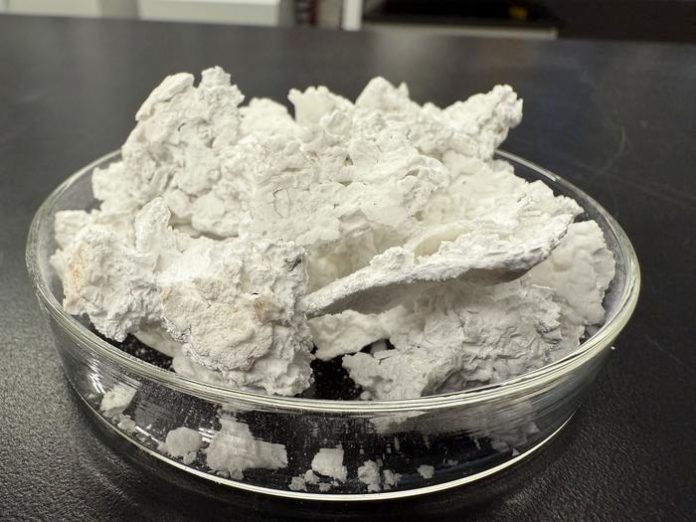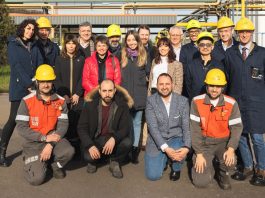Using seawater, electricity and carbon dioxide, Northwestern University scientists have developed a new carbon-negative building material.
The carbon-negative material addresses the challenge of deep carbon storage, which, despite having multiple climate benefits, does not maximise the value of the enormous amounts of atmospheric CO2.
The new process addresses this challenge by permanently locking away CO2 and turning it into valuable materials that can be used to manufacture concrete, cement, plaster, and paint.
The process of generating carbon-negative materials also releases hydrogen gas, a clean fuel with various applications, including transportation.
Growing carbon-negative materials in seawater
The new study builds on previous work to store CO2 long-term in concrete and electrify seawater to cement marine soils.
“We have developed a new approach that allows us to use seawater to create carbon-negative building materials,” said Northwestern’s Alessandro Rotta Loria, who led the study.
“Cement, concrete, paint and plasters are customarily composed of or derived from calcium- and magnesium-based minerals, which are often sourced from aggregates — what we call sand.
“Currently, sand is sourced from mining in mountains, riverbeds, coasts, and the ocean floor. In collaboration with Cemex, we have devised an alternative approach to source sand — not by digging into the Earth but by harnessing electricity and CO2 to grow sand-like materials in seawater.”
To generate the carbon-negative material, the researchers started by inserting electrodes into seawater and applying an electric current. The low electrical current splits water molecules into hydrogen gas and hydroxide ions. While leaving the electric current on, the researchers bubbled CO2 gas through seawater.
This process changed the chemical composition of the water, increasing the concentration of bicarbonate ions.
Finally, the hydroxide ions and bicarbonate ions reacted with other dissolved ions, such as calcium and magnesium, that occur naturally in seawater. The reaction produced solid minerals, including calcium carbonate and magnesium hydroxide.
Calcium carbonate directly acts as a carbon sink, while magnesium hydroxide sequesters carbon through further interactions with CO2.
Dual discoveries
Through experimentation, the researchers made two significant discoveries. Not only could they grow these minerals into sand, but they also were able to change the composition of the carbon-negative materials.
They did this by controlling experimental factors, including the voltage and current of electricity, the flow rate, timing and duration of CO2 injection, and the flow rate, timing and duration of seawater recirculation in the reactor.
Depending on the conditions, the resulting substances are flakier and more porous or denser and harder — but always primarily composed of calcium carbonate and/or magnesium hydroxide.
These carbon-negative materials could be used in concrete as a substitute for sand and/or gravel — a crucial ingredient that accounts for 60-70% of this ubiquitous building material.
Moreover, they could be used to manufacture cement, plaster and paint — all essential finishes in the built environment.
Storing carbon in structures
Depending on the ratio of minerals, the material can hold over half its weight in CO2.
With a composition of half calcium carbonate and half magnesium hydroxide, for example, one metric tonne of the carbon-negative material has the capacity to store over one-half a metric tonne of CO2.
If used to replace sand or powder, it would not weaken the strength of concrete or cement.
“This approach would enable full control of the chemistry of the water sources and water effluent, which would be reinjected into open seawater only after adequate treatment and environmental verifications,” explained Rotta Loria.
“We could create a circularity where we sequester CO2 right at the source.
“If the concrete and cement plants are located on shorelines, we could use the ocean right next to them to feed dedicated reactors where CO2 is transformed through clean electricity into carbon-negative materials that can be used for a myriad of applications in the construction industry.”





